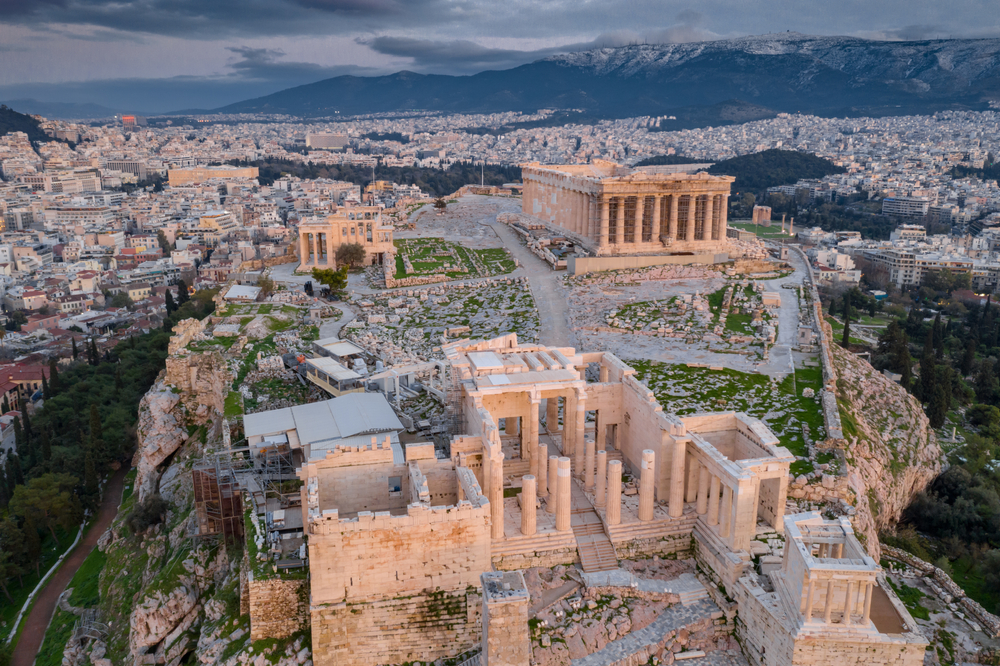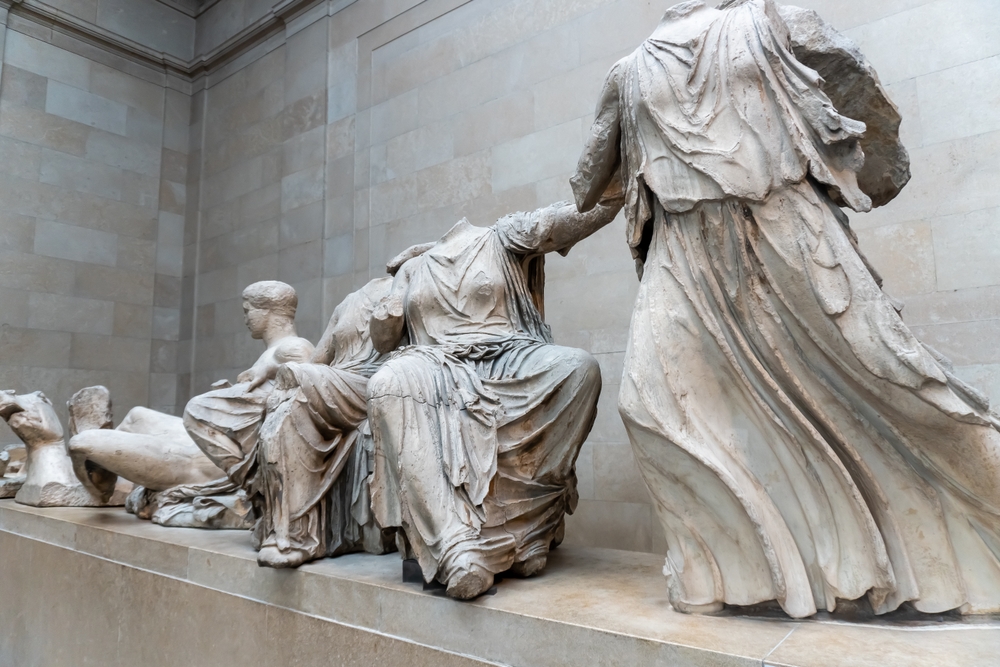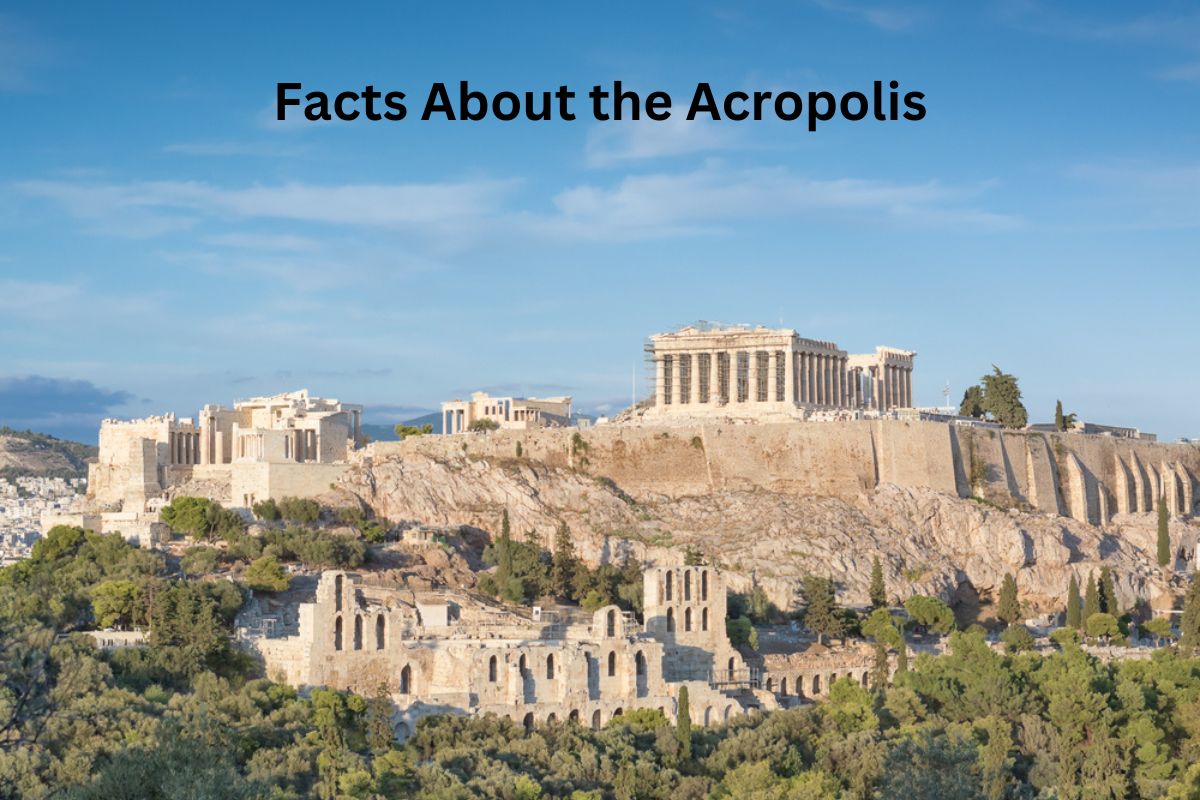The Acropolis is an ancient citadel located in Athens, Greece. Perched on a rocky hill, it is one of the most renowned archaeological sites in the world. The word “Acropolis” translates to “high city” in Greek, reflecting its elevated position overlooking the city.
The most famous structure on the Acropolis is the Parthenon, an iconic temple dedicated to the goddess Athena. Constructed in the 5th century BCE, it is a testament to classical Greek architecture.
The Acropolis served as a religious and cultural hub for the ancient Athenians, hosting significant festivals and ceremonies.
Today, it is a UNESCO World Heritage site and a major tourist attraction, drawing visitors to marvel at its architectural splendor and immerse themselves in ancient Greek history.
Acropolis Facts
1. The Acropolis is an ancient citadel in Athens, Greece
The Acropolis is situated on a prominent rocky hill in the heart of Athens, overlooking the city below. It has been inhabited since prehistoric times and served as a defensive stronghold in ancient Greece.
Also Read: Facts About Ancient Athens
2. The word “Acropolis” means “high city” in Greek
The term “Acropolis” derives from the combination of two Greek words, “akro” meaning “highest” or “topmost,” and “polis” meaning “city.”
It refers to the elevated location of the Acropolis, which allowed for better defense and visibility.

3. The Parthenon, dedicated to the goddess Athena, is the most famous building on the Acropolis
The Parthenon is an ancient temple that stands as an enduring symbol of classical Greek architecture. It was built as a dedication to Athena, the patron goddess of Athens.
Also Read: The Parthenon Facts
The temple’s grandeur and exquisite design have made it an iconic structure and a testament to the achievements of ancient Greek civilization.
The Parthenon’s construction reflects the ideals of balance, harmony, and mathematical precision that characterized the architectural style of the time.
4. Construction of the Parthenon started in 447 BCE and was completed in 438 BCE
The construction of the Parthenon was part of a large-scale building project commissioned by the Athenian statesman Pericles during the Golden Age of Athens. The architects Ictinus and Callicrates, along with the sculptor Phidias, were responsible for its design and construction.
The Parthenon was built using white marble from the nearby Mount Pentelicus and featured impressive architectural elements such as Doric columns and intricate sculptural reliefs.
5. Other structures on the Acropolis include the Erechtheion, the Propylaea, the Temple of Athena Nike, and the Odeon of Herodes Atticus
The Acropolis is not only home to the Parthenon but also encompasses other significant ancient structures. The Erechtheion, located on the north side of the Acropolis, is an Ionic temple dedicated to various gods and mythical figures, including Athena and Poseidon.
Also Read: Parthenon vs Acropolis
The Propylaea, or monumental gateway, served as the grand entrance to the Acropolis and featured impressive architectural details. The Temple of Athena Nike, situated to the right of the Propylaea, was built to honor the goddess of victory.
Lastly, the Odeon of Herodes Atticus, a stone theater, was constructed in the 2nd century CE and hosted musical and theatrical performances.

6. The Acropolis was a religious and cultural center for ancient Athenians
The Acropolis held immense religious significance for the ancient Athenians. It served as a site for various religious ceremonies and festivals, including the Panathenaic Festival, a major celebration in honor of Athena.
The Acropolis was also a center of artistic and intellectual pursuits, attracting renowned philosophers, writers, and artists. It housed numerous treasures, sculptures, and dedicatory offerings, making it a symbol of the city’s cultural and artistic achievements.
Additionally, it served as a gathering place for political assemblies and important civic events, reflecting its central role in Athenian society.
7. The Parthenon was damaged during the Ottoman-Venetian War in 1687
During the conflict between the Ottoman Empire and the Republic of Venice, the Parthenon was being used by the Ottomans as a gunpowder magazine.
In 1687, a Venetian artillery bombardment struck the Parthenon, causing a massive explosion that resulted in significant damage to the temple. Many of the columns and sculptures were destroyed or severely damaged, leaving the Parthenon in ruins.
8. Lord Elgin removed sculptures from the Parthenon, known as the Elgin Marbles, which are now in the British Museum
In the early 19th century, Lord Elgin, a British diplomat, obtained permission from the Ottoman authorities to remove a substantial collection of sculptures and friezes from the Parthenon.
These sculptures, known as the Elgin Marbles or Parthenon Marbles, included important artistic and architectural elements from the temple.
Today, the Elgin Marbles are housed in the British Museum in London, although their acquisition remains a subject of ongoing debate and controversy between Greece and the United Kingdom.

9. Extensive restoration efforts have taken place to preserve and reconstruct the Acropolis
Over the years, the Acropolis has undergone significant restoration and conservation projects to protect its architectural elements and ensure its long-term preservation.
These efforts have involved meticulous research, archaeological investigations, and the use of advanced techniques to stabilize the ancient structures and repair damage caused by weathering, pollution, and previous interventions.
Restoration work has aimed to reconstruct missing parts of the buildings, such as columns, sculptures, and decorative elements, using the original materials and techniques wherever possible.
10. The Acropolis is a UNESCO World Heritage site and a popular tourist destination
The Acropolis is a UNESCO World Heritage site and a popular tourist destination: In 1987, the Acropolis, along with its monuments, was inscribed as a UNESCO World Heritage site, recognizing its outstanding universal value and importance to human civilization.
The Acropolis continues to attract millions of visitors each year who come to admire its architectural grandeur, explore its historical significance, and appreciate the artistic and cultural legacy of ancient Greece. The site offers breathtaking views of Athens, and visitors can immerse themselves in the rich history and cultural heritage of the ancient Greeks through guided tours, exhibitions, and informative displays.
